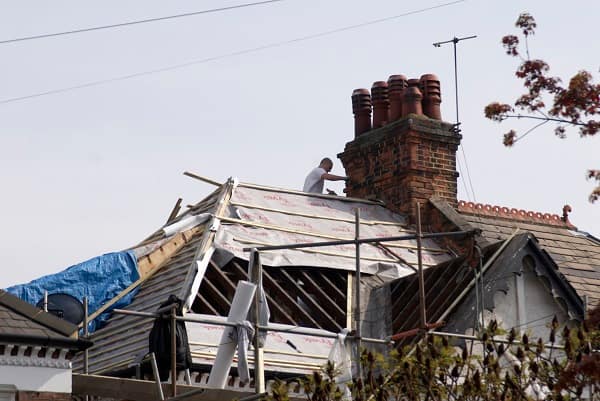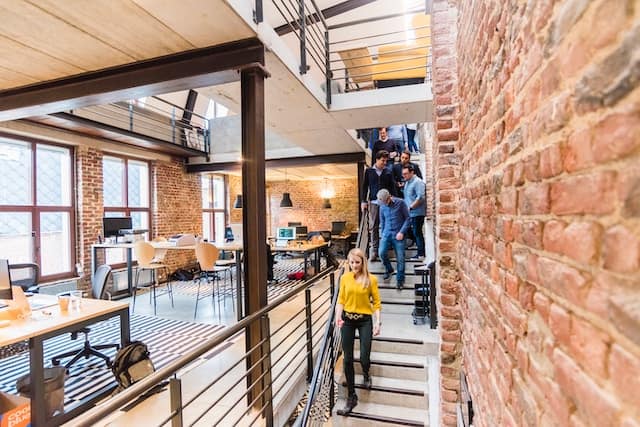Experts are suggesting that house prices could fall 10% before the end of 2024, which is no doubt welcome news for buyers; however, it can put more pressure on sellers to make the most of the property to get maximum resale value when the property hits the market.
However, prices are expected to remain high for some time thanks to the steep rise that occurred in 2020; sale prices rose by around 20% on average as the UK became a seller’s market. However, this trend has finally shown signs of reversing, and coupled with stricter mortgage criteria and increased difficulty for first-time buyers to get a foot on the property ladder, where does this leave sellers?
Dispute new property sales dropped by 11%, according to Hoopla, in the first quarter of 2023; it is still 19% higher than sales back in 2019, meaning sellers can still expect to sell their homes within a couple of months on average, depending on supply and demand in the local area, for example, demand in London remains high with many homes being snapped up within 25 days of hitting the open market.
If you are considering listing your property for sale now or sometime in the near future, it can be in your best interest to look at ways to increase value to get the best resale price possible. That being said, it is imperative you pay attention to other homes on the market to get a feel for what prices houses are going for and the standards of the home to obtain the final selling price. Your area will also likely have a top value that people aren’t willing to pay more than for that specific area. Paying attention to the local market can offer you a better insight into what is in demand and what you can do to improve the aesthetics and value of your home when the time comes to sell up and move on.
Basement or cellar renovations
While basement renovations aren’t typically common in UK homes, for properties that are tight on space but need to be extended, more homeowners are looking at how to go up and down to get more space. It can be a good compromise over extending out and reducing outdoor space, which is also a valued commodity in built-up areas.
If you have an existing basement or cellar (a basement is a space under a house with at least one-half of its height above ground level while a cellar has more than half its height underground level), a renovation turning it into a more useful space hooked up with utilities and a light source cna add up 30% to the value of your home. However, the price of the build needs to be less than the price per square foot in the area to ensure you aren’t wasting money or not seeing a return upon selling.
If you don’t have an existing cellar or basement, you can obtain permission to dig down into the foundations; however, this requires more attention and will be more expensive to complete, so it’s worth paying attention to the needs of those looking to reside in your area and the current demand for houses with living space below ground for property types similar to yours.
Garage conversion
It’s a common thought in the UK that most people don’t use their garages for storing cars. Instead, they treat them as an additional storage unit. This is likely due to older-style car garages not being big enough to house modern larger cars easily, making them somewhat redundant.
If you have a garage on your property that you aren’t using for any reason, renovating it into a more usable space can be a worthwhile investment. Doing so can increase your home value by around 15%.
In many cases, you won’t need any specific planning permits to develop the space; however, it is worth checking with your local council to make sure you aren’t breaching any planning regulations before moving ahead, as there may be some restrictions on uses or requirements to turn it into specific types of rooms. But a garage conversion will still be subject to building regulations to ensure structural integrity, and you will likely need multiple inspections to check on insulation, electronics drainage etc., so this is worth bearing in mind before moving ahead with work.
Build an extension
In 2019, 22% of houses sold had an extension. Many older-style homes in the UK aren’t built for blogger families or modern living, and as such more and more people are turning to home renovations as opposed to moving home to find a more suitable space.
Home extensions can be used for many different reasons. Single-storey extensions are often viewed as permitted developments meaning you do not need any planning permission. Still, you need to comply with guidelines (usually no more than 4m high or wider than your existing building), and you will still be subject to building regulations like a garage extension. Home renovations of this nature can positively increase the value of the home depending on how much space it increases in the house.
Double-storey extensions or those outside of permitted development limits will need a planning application, and you will likely need to submit plans to be approved before any work can start. You will also need to consider neighbouring properties and their privacy should your plans infringe on these, but should it be approved, not only can you increase your living space but the value of your home when it comes time to move on.
Landscaping
Garden space can be limited in highly populated areas; developers will have compromised on outdoor space to increase the number of homes built in new developments or condensed inner city areas. So making the most of your garden and your curb appeal, too, can positively increase the value of your home when done right.
A popular trend for improving outdoor areas is to incorporate indoor-outdoor living, meaning you open up the back of your home to flow out into the garden and onto a decked or paved area, for example, with some type of structure such as a retractable awning pergola or gazebo.
Pay attention to how you use your garden and how it flows from your home to make the most of the space, and design an outdoor area you can enjoy and is practical to use.
New kitchen
New kitchens are undoubtedly the most popular type of home renovation you can carry out. Most homeowners will seek to overhaul their kitchen during living in a house, and current trends include extending the kitchen to create a kitchen dining space that opens up into the garden to maximise space.
A new kitchen won’t just increase your quality of life but add around 26% to the value of your home depending on the size, layout and level of finish attained, according to a survey by The Post Office. This can be more if you build an extension with increased lighting options such as skylights or glass walls and roofing supported by products from clearambershop.com to flood the space with natural light and really open up your home.
With a kitchen makeover there is also an option to try out unique styling choices that can easily be swapped out and updated in the future. For example, you can easily change the handles on cupboard doors or add eye catching kitchen rugs to the flooring in colder seasons. From the artwork on the walls to the overall colour scheme in the room, there are so many different styling choices to go for, which makes it an appealing project for an interior design enthusiast. Similarly, the flexibility and adaptability of a kitchen renovation is also why it’s the number one choice amongst UK homeowners today.
If you are only renovating one area of your home for increased usability, then it is worth investing in your kitchen.
New bathroom
Bathrooms can be an expensive investment; you need to work closely with plumbers to ensure you are working to regulations and your bathroom works correctly once everything is installed. The last thing you want is to complete a bathroom renovation only to find you have sprung a leak or you have no water to facilities.
That being said, you can carry out lower-cost bathroom refits that will still add value. Granted, bathrooms won’t usually add as much value as, say, an extension or a kitchen; it’s generally less than a 10% increase, but it can be a huge selling point for buyers and allow you to enjoy your home more while you live there too.
For increased value options, you can likely pay more; for example, enclosure showers will often cost more than enclosed pens as you will need more complex draining to ensure water runs off correctly without causing damage to your home. Wall-mounted fixtures such as cisterns will increase the cost as you will need to hang them internally rather than fixing them on the floor like traditional methods. However, they can offer you a more modern and stylish option, so it’s worth considering them, especially if you plan to stay in your home for the immediate future to help you get more value from the work.
Conclusion
Improving your home with a view to selling can often seem like a misnomer; however, you can benefit from living in a house that caters more to your needs and ensure you recoup some of your investment when you do come to sell. It pays to research your home and your local area before parting with huge sums of cash and commuting to work being carried out to ensure it works in your favour and you aren’t wasting money on additions and upgrades that won’t be beneficial in the long run.






Leave a Comment